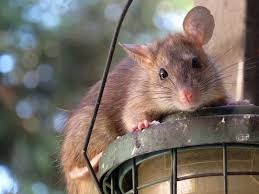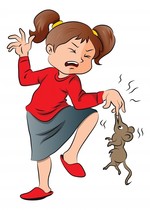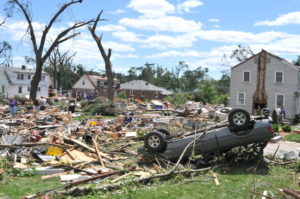 Members of the Muridae family are the dominant species in every region of the world, due to their ability to adapt to and exploit new situations. Commensal rats and mice, those that live at the expense of humans, invade their dwellings, eat their food, upset their comfort, and frequently transmit diseases to them, belong to this family. Three species of commensal rodents are the most widely distributed: the Norway Rat, Rattus norvegicus; the Roof rat, Rattus rattus; and the Common (House) mouse, Mus musculus.
Members of the Muridae family are the dominant species in every region of the world, due to their ability to adapt to and exploit new situations. Commensal rats and mice, those that live at the expense of humans, invade their dwellings, eat their food, upset their comfort, and frequently transmit diseases to them, belong to this family. Three species of commensal rodents are the most widely distributed: the Norway Rat, Rattus norvegicus; the Roof rat, Rattus rattus; and the Common (House) mouse, Mus musculus.
When natural disasters strike, rats and mice experience the same suffering as humans. Many of them are crushed to death or drowned, die of starvation, or fall prey to infections. Their populations are frequently decimated. Survivors, fearful and disorganized, wander into new areas in search of protection, shelter, and food. It ta kes time for them to regroup and reorganize their social behavior, become familiar with their new environment, find safe havens, locate food and water, and memorize their movements. All this occurs before they can again begin reproducing.
kes time for them to regroup and reorganize their social behavior, become familiar with their new environment, find safe havens, locate food and water, and memorize their movements. All this occurs before they can again begin reproducing.
Colony building and reproduction will only begin when their new ecosystem has stabilized. This typically takes 6 to 10 months under favorable conditions. As the rodent population grows and resettles, people have a greater chance of being exposed to the diseases carried by rodents. Rodent urine and dander also contain allergens that can cause allergic reactions or trigger asthma symptoms in sensitive persons and more than 9,000 persons are treated in emergency departments annually for rat or mouse bites.
 FACT: Some rats, if provoked and cornered, will fight their way out of a confrontation, as will many wild animals. But most rats and mice do not directly attack humans. Young babies, bed-confined elders, and the homeless sleeping in doorways and alleys, however, are occasionally bitten by unprovoked rats. In some cases, those cleaning up debris after natural disasters will come in contact with frightened rats (mice) and may experience bites.
FACT: Some rats, if provoked and cornered, will fight their way out of a confrontation, as will many wild animals. But most rats and mice do not directly attack humans. Young babies, bed-confined elders, and the homeless sleeping in doorways and alleys, however, are occasionally bitten by unprovoked rats. In some cases, those cleaning up debris after natural disasters will come in contact with frightened rats (mice) and may experience bites.
So even with immediately decreasing populations, rats are perceived to be increasing because they gravitate to the same areas as humans and become more prevalent and evident in those environs.
Why are rodent populations, and their movements, so important after disaste rs? Because events like Hurricane Irma and Jose, the fires in our great northwest, tornados in the midwest and the earthquakes in the U.S. and Mexico, can change the ecology of affected areas, making it more favorable to rats and other vermin. At the same time, they can curtail community services that can keep these pests in check.
rs? Because events like Hurricane Irma and Jose, the fires in our great northwest, tornados in the midwest and the earthquakes in the U.S. and Mexico, can change the ecology of affected areas, making it more favorable to rats and other vermin. At the same time, they can curtail community services that can keep these pests in check.
For more information on Rats and Mice and the illnesses they cause and the diseases they carry, check out this link: https://www.cdc.gov/rodents/diseases/index.html
Need to know how to get rid of Rats and Mice? Check out this website: https://www.corkyspest.com/rats.html
 800-901-1102
800-901-1102
I found this is an informative and interesting post so i think so it is very useful and knowledgeable.
Thank you, Joe, for your comment. I will continue to try to provide, “nourishing food for thought”. So much is happening in our natural world that my choice of subjects is looking to be almost unlimited. Thank you for reading.
Nancy
Damn!!